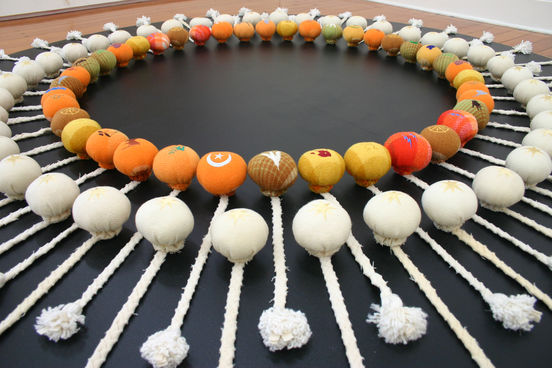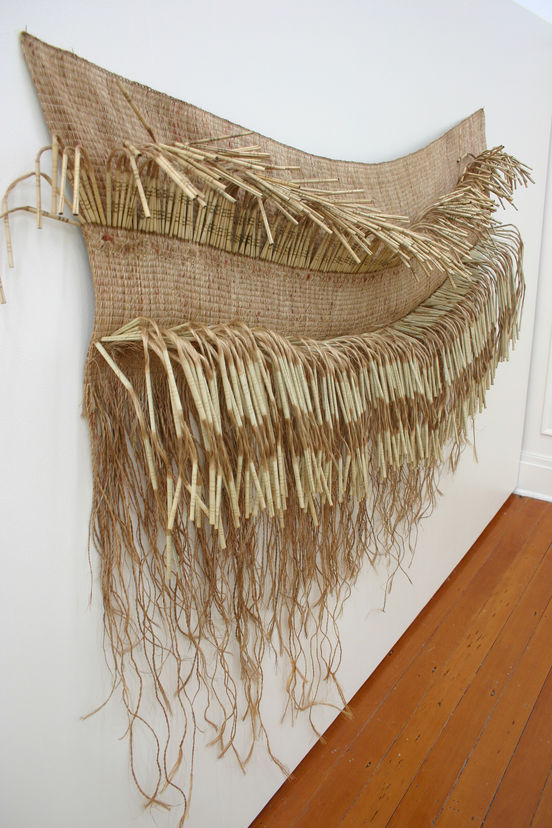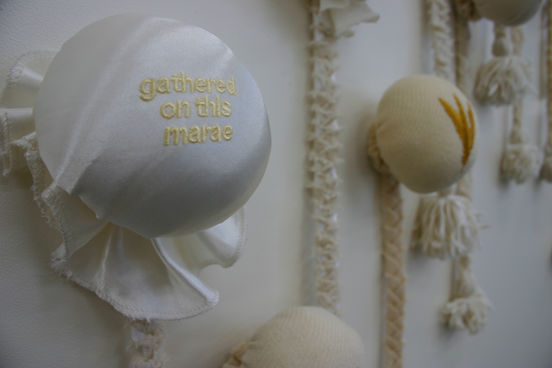Sing - recite - repeat - inform - reiterate - impart - provoke - react - respond. All of these kupu (words) illuminate the concept of chants or waiata and express the ways in which oral traditions can communicate deeper insight and meaning to events, people and relationships. Whether motivated by political struggle or individual desire and ambition, the narrative message found within chants has the power to elevate and emancipate agendas and positions. This practice is applied here to describe the pairing of contemporary Maori weavers Ngaahina Hohaia and Karl Rangikawhiti Leonard.
Their chants reverberate to a different beat with a diction that is uniquely their own. Framed firmly by the place weaving and the fibre arts have played in their upbringings, it is no surprise that Hohaia and Leonard were destined to take their love for the art form to new heights with purpose and conviction.
For Ngaahina Hohaia, of Ngati Moeahu and Ngati Haupoto descent, Parihaka is the kainga (home) from which her world view and heritage are intrinsically shaped. One example of the Parihaka tradition represented by Hohaia's work in this exhibition is poi manu or poi chants. This customary practice was a way of imparting tribal narratives and recalling significant events. Hohaia draws on the concepts and ideas found within these waiata to present her own contemporary poi manu that give new insight to this tradition of ritual narration.
Karl Rangikawhiti Leonard, of Te Arawa, Ngati Awa and Ngati Raukawa descent, opens up a range of innovative weaving approaches and techniques, subtly sitting amongst what one might describe as strictly customary mahi raranga (plaiting and weaving work) and mahi whatu (finger woven fibre work). For Leonard the skill and knowledge of weaving was part of the relationship he shared with his grandmother and the kuia of his kainga in Rotorua. Whether mastering carving or weaving, for Leonard, learning and understanding the foundations of each art form is the platform from which he pushes the parameters of each discipline to create new statements.
Manawa Wera - Defiant Chants, holds a beat that implies a steadfast and determined resolve and, for differing reasons, it also describes the positions of both Hohaia and Leonard. The metaphorical use of chants to poetically describe the commonalities and individual aspirations found within their art practices also tell us something of their qualities and beliefs. Whether motivated by the stories of Parihaka or a desire to innovate and strive for excellence within the art form, it is the personal convictions of both artists which allow the works in Manawa Wera - Defiant Chants to resonate loudly with the viewer. With this exhibition, two artists collaborate to present new and recent works that innovate and push new ideas and boundaries within the wider discipline of mahi raranga and mahi whatu.
- Nigel Borell
--
A publication for this exhibition is available to view or download here.

Ngahina Hohia, The Prayer, 2010.

Karl Leonard, Pihepihe (Kakahu), 2010.

Ngahina Hohia, Kao-kao, 2006.